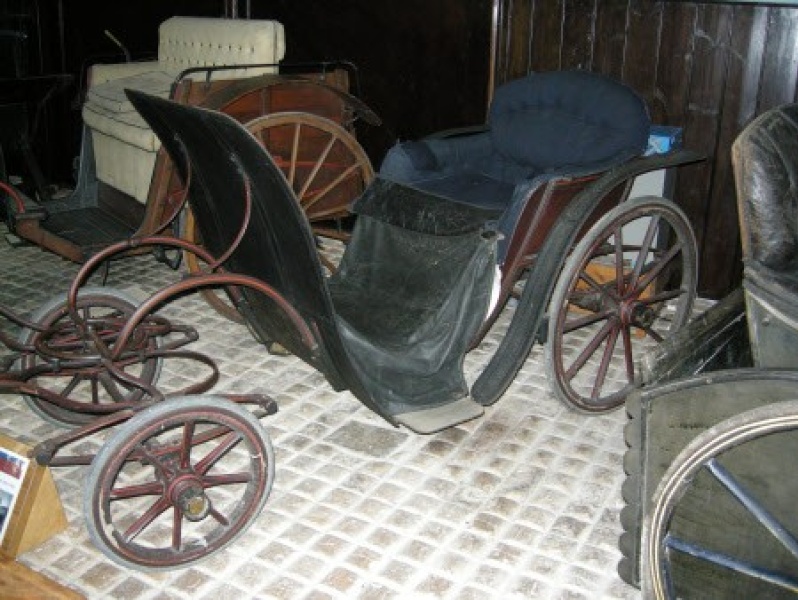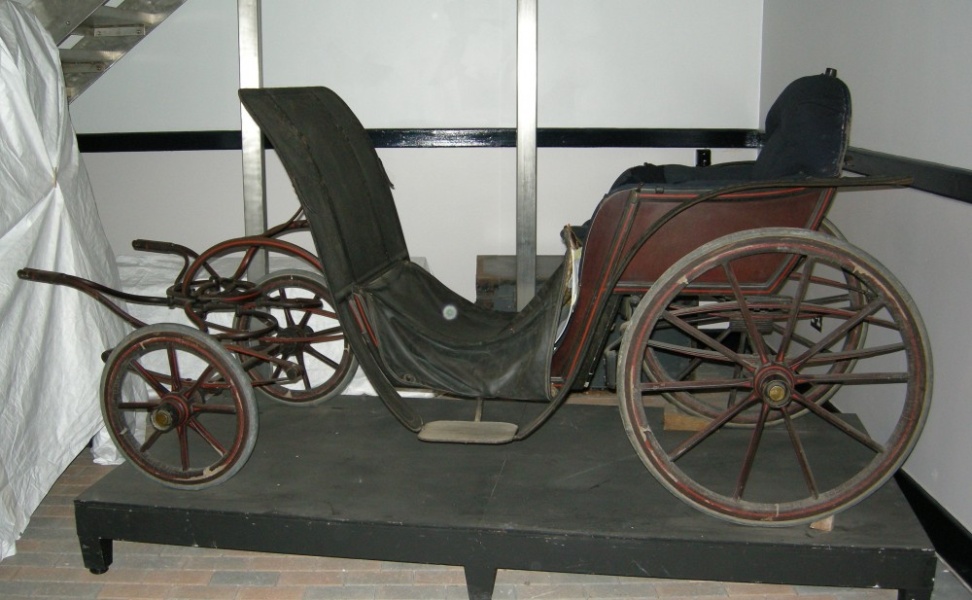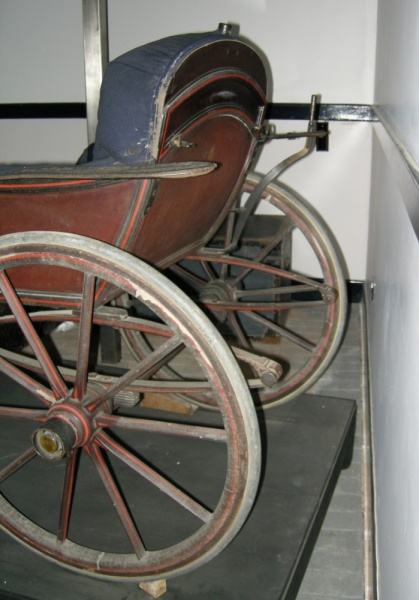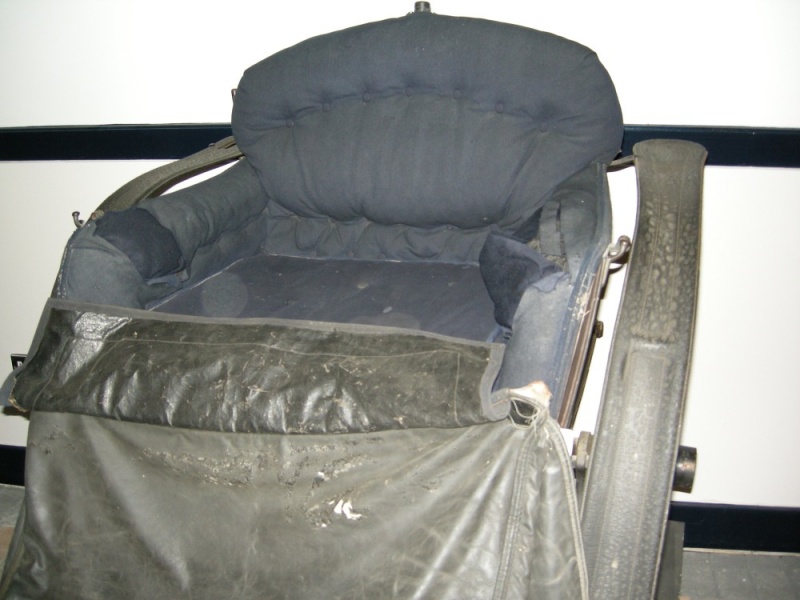Use the dots above to scroll through images.
Listed in 1 collection
Listed at 1 museum
Listed for 1 maker
Quick Details
Carriage Type
Pony Phaeton
Date of Production
late 19th century
Accession or Inventory Number
ARL/CM/W/1
Materials used
Paint, Wood, Iron, Leather, Wool Box Cloth, RubberSummary of Pony Phaeton
This carriage was used by Queen Victoria at Osborne House. The dash board was made higher than normal as the Queen felt it inappropriate to see her pony’s bottom! It is painted in the royal colours of maroon, lined bright red, and has the royal cipher on the side panels. The position of the brake lever shows that the attendant (perhaps even the celebrated John Brown) walked behind the carriage and could apply the brake when necessary. This carriage was built at the end of the 19th century by Cheverton, Newport, Isle of Wight.
The carriage was acquired by the Science Museum in 1936. It was part of a group of nine carriages presented to the Science Museum by Edward VIII in November just before his abdication. Although it was always used at Osborne House, after Queen Victoria died, the pony phaeton was moved to the mews at Windsor Castle. A letter from the Keeper of the Science Museum dated July 1938 records, “Last year through Erskine the Crown Equerry, I was allowed to select nine carriages from the Royal Mews (before Edward VIII put them under the hammer). I raked the BP and Windsor mews myself and Erskine said there was nothing of any interest left at Balmoral or Sandringham.”
Dimensions
Height: 3ft 7 1/2in
Length: 8ft 9 3/4in
Width: 4ft
Front wheel diameter:
Rear wheel diameter:
Full description
This carriage has a single seat (24” wide). The cut-under body has a convex back panel and on the back of the body are sockets on the waist rails for a leather head to be attached. A socket for parasol is fitted to the top of the back rail. To either side of the body of the carriage are platform steps covered with white ribbed rubber. There are no lamps on this carriage and no provision to fit them. The phaeton has a leather head that has been removed, a leather dashboard combined with front wings that extend to the platform steps and mounted on the footboard, supported by curved stays. Double-curved wings extend from steps to behind the line of the back panel. There is a surviving black leather-cloth apron with brown and cream dogtooth check wool lining, and blue faced wool cloth skirt.
This phaeton has 8 and 12 spoke English pattern wheels with rubber tyres in clincher channels. The axles are collinge with brass caps.The carriage is sprung on elliptic springs front and back, bolted to the axle flaps and to the wheel iron heads and also on to the brackets beneath seat board. The forecarriage consists of a simple, open futchell iron construction. The full wheel plate is supported on arched stays from the front of the body, which incorporate the transome. The axle bed is deeply compassed. The shafts are not seen with the carriage. A rolling bar brake with linkage to the hand lever it fitted to this carriage. The brake has wood blocks with iron plates.
The body frame and the underside of body are painted black with red lining on the body frame. The body panels, wheels and undercarriage are painted maroon with red lining. A garter inscribed ‘honi soit qui mal ey pense’ – surmounted by royal crown and surrounding lion on royal crown is painted on the side panels.
The seat back, quarter squabs, and seat cushion are upholstered in dark blue wool cloth and buttoned. The seat fall is of a similar cloth. The footboard and heelboard are covered with dark blue cut pile carpet. The loose deep pile carpet does not belong to this carriage.
Inscriptions
On the axle caps: CHEVERTON NEWPORT. I.W
Condition report
This pony phaeton is in good, sound condition retaining its original leather apron and paintwork. There is some loss on paintwork on the wheels.
Acess information
This Pony Phaeton is in the care of The National Trust at the Arlington Court Carriage Museum.
Arlington,
near Barnstaple,
Devon,
EX31 4LP
https://www.nationaltrust.org.uk/arlington-court-and-the-national-trust-carriage-museum
Picture credit
The National Trust/Elizabeth Jamieson

 Carriage Foundation
Carriage Foundation


